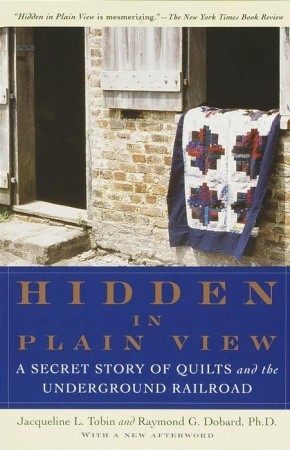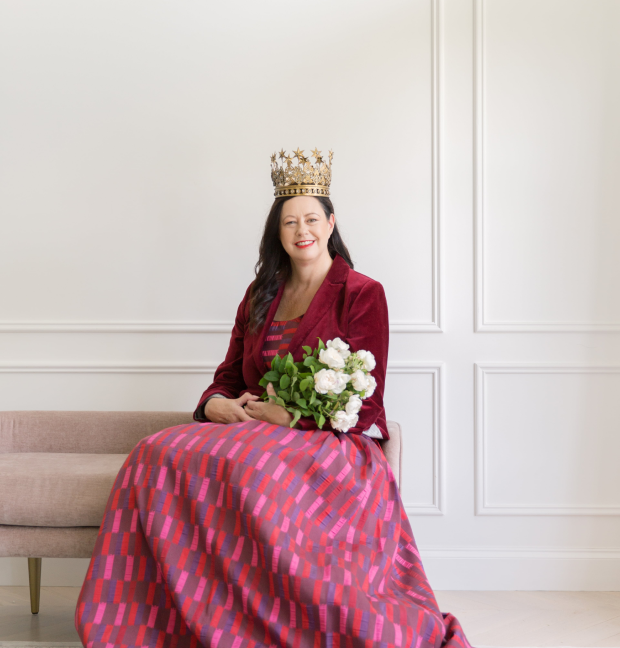
The Blurb (from Goodreads):
In Hidden in Plain View, historian Jacqueline Tobin and scholar Raymond Dobard offer the first proof that certain quilt patterns, including a prominent one called the Charleston Code, were, in fact, essential tools for escape along the Underground Railroad.
In 1993, historian Jacqueline Tobin met African American quilter Ozella Williams amid piles of beautiful handmade quilts in the Old Market Building of Charleston, South Carolina. With the admonition to "write this down," Williams began to describe how slaves made coded quilts and used them to navigate their escape on the Underground Railroad. But just as quickly as she started, Williams stopped, informing Tobin that she would learn the rest when she was "ready."
During the three years it took for Williams's narrative to unfold--and as the friendship and trust between the two women grew--Tobin enlisted Raymond Dobard, Ph.D., an art history professor and well-known African American quilter, to help unravel the mystery.
Part adventure and part history, Hidden in Plain View traces the origin of the Charleston Code from Africa to the Carolinas, from the low-country island Gullah peoples to free blacks living in the cities of the North, and shows how three people from completely different backgrounds pieced together one amazing American story.
My Thoughts:
In 1993, historian Jacqueline Tobin met an elderly African American woman Ozella Williams selling her beautiful handmade quilts in a market in Charleston, South Carolina. They fell into conversation, and Ozella told Jacqueline that many of her designs had been passed down through her family and had once been used as a visual code to help slaves navigate their escape on the Underground Railroad. Jacqueline was intrigued but sceptical. How could quilts be maps? And, if Ozella’s story was true, why did nobody know about it? She questioned Ozella, but the old woman refused to tell her anymore. It was meant to be kept secret. When pressed, Ozella said she would tell Jacqueline the rest of the story when she was ‘ready’.
Jacqueline began to investigate the possibility that the story was true. She met with Ozella several times, the friendship and trust between them slowly growing, and she enlisted the help of Dr Raymond Dobard, an art history professor who specialised in African American quilts. They became convinced that the story had some premise in truth, and present the evidence they found to support Ozella’s story. The book was published in 1999, and has attracted controversy ever since. One of the problems is that which always arises when trying to prove oral history, which is by its nature slippery and unreliable – there is little empirical evidence to support the premise. Slave quilts were not preserved, nor their provenance recorded, nor their meaning questioned. Quilt patterns have different names and old ones are often adapted and renamed. Sadly Ozella Williams died soon after the book was completed, and so she cannot be questioned further.
I found the book absolutely fascinating. I am used to studying the way oral history and storytelling shapeshifts and camouflages itself, and I think that a lot of what the two authors have discovered is plausible. Here in Australia, we have the example of Indigenous storytelling where knowledge of country has been passed down word-of-mouth for thousands of years. One myth, from the Gunditjmara people of the south-east Australia, has been shown to carry evidence of a volcanic eruption that had occurred 37,000 years ago. And my sister and I, researching the life of our great-great-great-great-grandmother, found empirical evidence to prove numerous family stories that we had heard from our grandfather, who had heard them from his grandmother who had heard them from hers. To deny the value of oral history is to lose a rich fund of first-hand accounts of history, particularly in cultures where literacy was not the norm.
However, I do understand that many historians find the evidence debatable, and many non-historians wish the authors had just told the story of the quilts and their meaning, without the constant need to support their arguments. It’s the age-old tension between the historian and the storyteller. Read the book and decide for yourself.
You might also like to read my review of Threads of Life by Clare Hunter:
BOOK REVIEW: Threads of Life: A History of the World Through the Eye of a Needle by Clare Hunter

